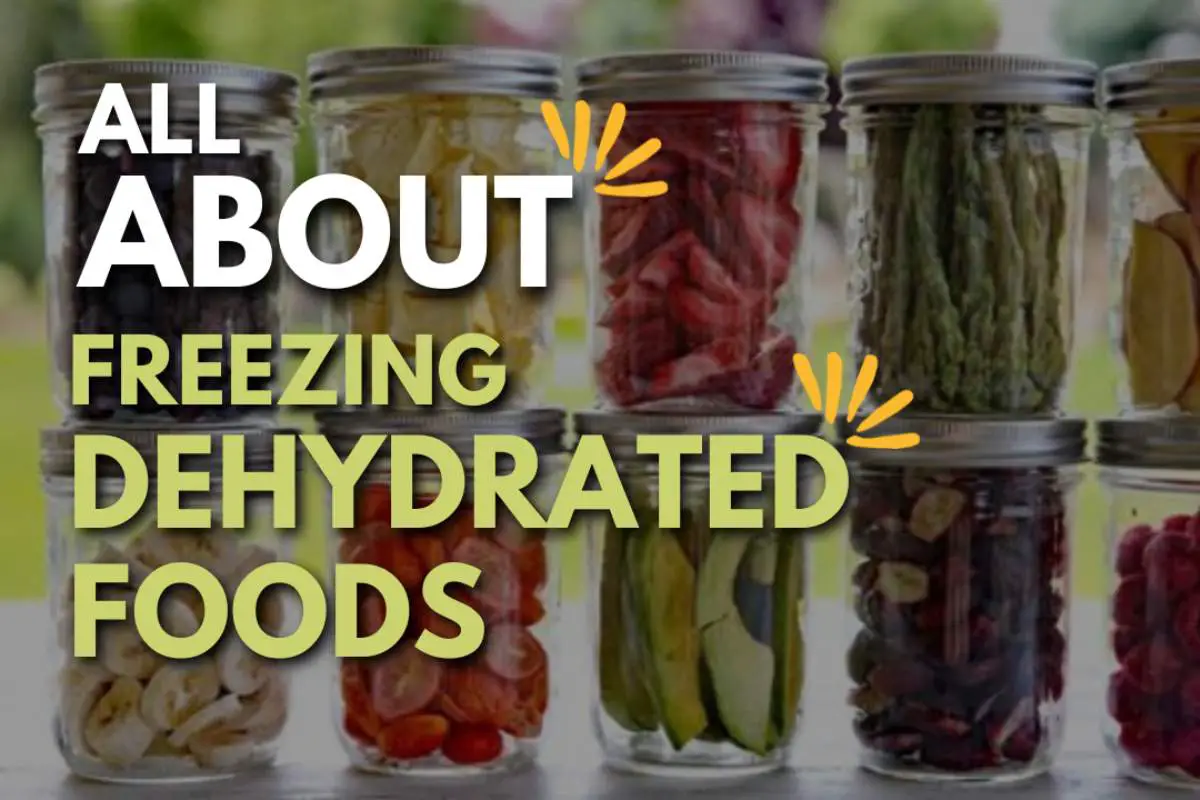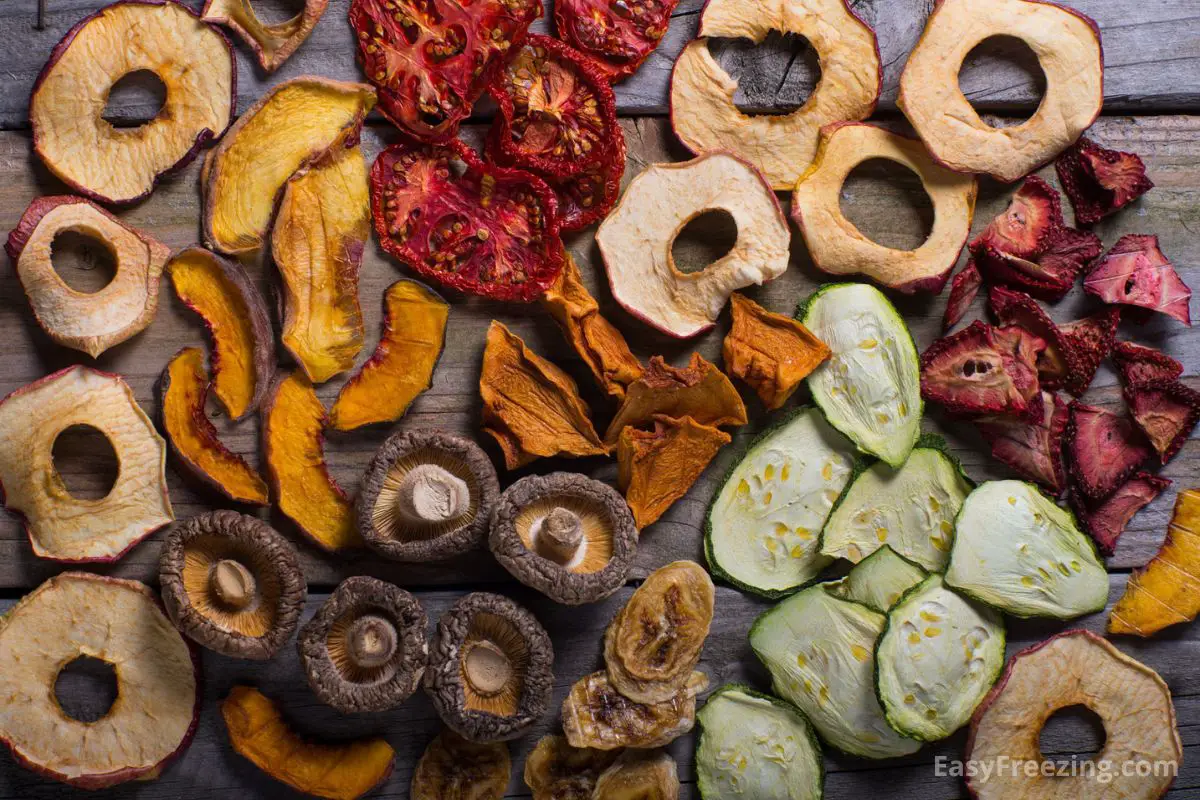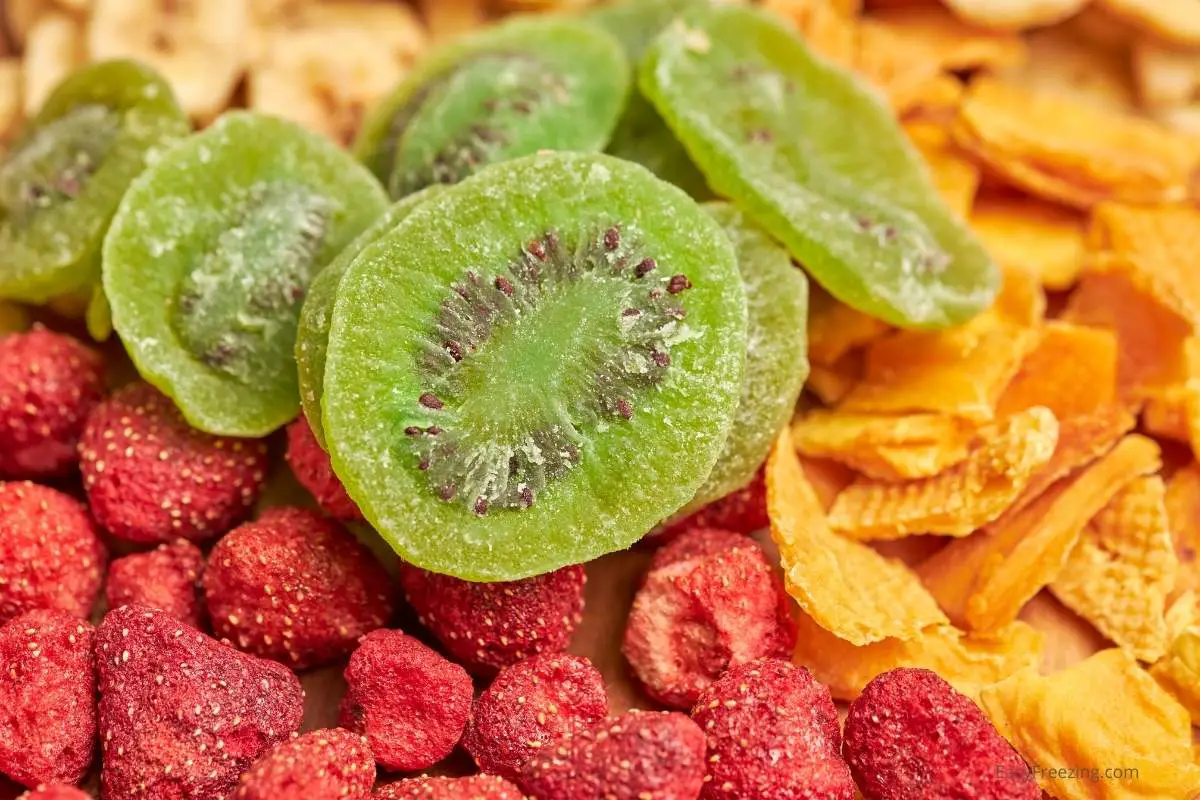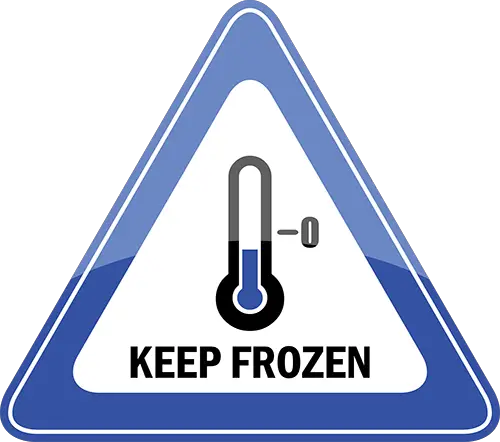Can You Freeze Dehydrated Food? (Answered)
If you dry food at home, then you already know that dehydrated food has a much longer shelf life than the same food that is not dried. Now you may be wondering if you can also freeze dehydrated food to increase its shelf-life even longer.
Freezing dehydrated food will extend the dry food’s shelf life by several more months. Any dehydrated food item can be frozen in an airtight plastic bag or container to further preserve its flavor and freshness.
In this article, I will tell you how to freeze dehydrated food so that it lasts a long time in your freezer. I’ll then discuss the benefits of freezing dry food, and finally, I’ll explain the various ways you can dehydrate your food at home if you’re not already familiar with the process. Let’s go!

How To Freeze Dehydrated Food
Dehydrated foods are stored in the freezer in the same way as regular meats, fruits, and vegetables. Frozen storage in freezer bags, vacuum-sealed plastic bags, or other air-tight containers extends their shelf life.
The only absolute requirement for storing dehydrated food is a tight seal, as any moisture content can cause dehydrated vegetables, fruits, and meats to develop freezer burn or become mushy.

Flash Freezing Dehydrated Food
Flash freezing dry food can prevent dehydrated vegetables and fruits from clumping and sticking together when frozen in bags or containers.
Here are the steps to flash freezing dehydrated food items:
- First, remove the food from the dehydrator, and spread it out evenly on a metal baking sheet that’s been covered with parchment paper, making sure that none of the food pieces are touching.
- Then place the baking tray in the freezer, making sure it is level so that the pieces don’t collide, as often happens when you try to flash-freeze dried strawberries or peas.
- Leave the tray of dehydrated fruit or vegetables in the freezer for two hours, then remove.
- Once the items are completely frozen, gather them into a freezer bag, making sure to push out any excess air and seal the edges. Label the containers with the date and store them in the freezer. This is a particularly great way to freeze sticky fruit.
Removing Excess Air
It’s critical that you remove as much excess air from the bag or container your using to freeze your dehydrated foods. Cold freezer air in direct contact with your food while in a frozen state causes oxidation and freezer burn.
Here are some tips for eliminating excess air depending on the type of storage container you are using.
Removing Air From Plastic Bags
Freeze dry food in a heavy Ziploc-style bag with a sealed edge. Before sealing the bag, compress it to remove air and prevent moisture from spoiling the contents. This is an important step for all dried fruits, vegetables, and meats.
Burping Air Tight Containers
To freeze dry food in an airtight container, fill it up to the brim and then burp the lid to expel excess air from the container. This creates a vacuum chamber that resists oxygenation and extends shelf life.
Using a Vacuum Sealer
Alternatively, you can use a vacuum sealer (Amazon.com) to suck all air out of a freezer bag. It is the best way to freeze dried foods over the long term, especially if you do the flash freeze first.
The Advantages of Freezing Dehydrated Food

There are many advantages to freezing dehydrated food at home.
Frozen Dehydrated Food Retains Freshness
Once stowed in your lunchbox or backpack, your frozen, dehydrated food will thaw out until it is time to rehydrate it and eat it. Reconstituted frozen, dehydrated food has a fresher appearance and taste.
Frozen Dehydrated Food Is Fast And Convenient
It takes less than five minutes to rehydrate frozen, dried food and eat it as a snack. You can freeze whole camping meals or lunches by first dehydrating food then packaging it as individual meals in your freezer (i.e., soups, chili, etc.).
Frozen, dehydrated food can be boiled, steamed, or cooked in an oven or microwave. Be sure to reconstitute the food with water or another liquid before cooking.
Frozen Dried Food Retains Texture and Taste
Dehydrated foods tend to have a chewy pleasant texture. This is especially true of the dried fruits that you freeze. Frozen, dehydrated food retains both its texture and nutritional value and has a longer shelf life.
Add Frozen Dehydrated Food To Meals
You can add a variety of different tastes to your everyday cooking by simply adding dehydrated garden herbs, dried vegetables, or whatever you happen to have on hand in your dehydrated food containers in the freezer.
How to Dehydrated Food Before Freezing

If you’re not fully aware of how the dehydration process works, this section will give you information about how to dehydrate your food in the first place, before placing it in your freezer.
Food Dehydration Methods
You can purchase an electric food dehydrator (like this inexpensive and highly-rated one on Amazon) to remove moisture from your foods or use more “old school” methods to dry foods passively.
A dehydrator can prepare any food for storage in the freezer, including herbs, fruits, vegetables, and meats. Drying removes moisture from foods, extending their life in your home freezer.
Electric Dehydrators
There are two types of electric food dehydrators: vertical and horizontal.
Vertical dehydrators consist of plastic food trays stacked on top of each other so that you can dry several foods at once. A unit on the base blows warm air upwards to dry the food spread out on the trays.
Horizontal dehydrators blow warm air over stacked food trays from the back to the front of the unit, which prevents the intermingling of flavors from different drying foods.
Other Methods of Drying Food
In addition to electric dehydrators, the Food Revolution Network suggests the following methods to dehydrate foods and prepare them for food storage in the freezer.
- Oven drying by spreading food on a tray and baking it at 140 degrees or lower for several hours.
- Sun drying by exposing the food to direct sunlight during the day (works best in a dry climate.)
- Air drying requires a clean indoor space with airflow, and a rack from which to hang herbs, vegetables, and fruits.
No matter which method you choose to dehydrate your food, I think you’ll find a lot of benefits in drying food and then storing it in the freezer.
Can Reconstituted Foods Go Back In The Freezer?
If you accidentally remove from the freezer and rehydrate too much food, you can generally put it back in the freezer with a few exceptions.
It’s not a good idea to reconstitute and then refreeze the following food items:
- Raw meat, poultry, or seafood
- Cooked meat, poultry, or seafood
- Pasta, especially with meat sauce
- Egg dishes
- Freeze-dried products like powdered ice cream
These foods are vulnerable to fermentation or generating the type of bacteria that causes food poisoning. Even in dried form, they should not be mixed with other foods.
Note that the more water that is removed from the food during the drying process, the better.
Keep in mind that the more times a food is frozen, thawed, and refrozen, the more likely it is to break down in structure, as well as lose nutrients, taste, and texture.
For best results, only reconstitute your dehydrated meals for one-time use, and discard the leftovers.
Freeze Drying Versus Freezing Dehydrated Food
Sometimes the terms “freeze-dried” and “freezing dehydrated food” get confused.
Freeze-drying food is different from freezing dehydrated food. Freeze-dried food is a commercial food preservation process invented for the military during World War II. Freeze-dried meals are now often sold in mylar bags as camping meals.
In the food industry, the freeze-drying process is called lyophilization. Food is flash frozen with dry ice, and then all ice crystals are removed with a vacuum pump. Water is then instantly dried as water is evicted from the bag in its gaseous form.
By contrast, dehydrated foods have their water removed using warm air. Food can be dehydrated using the sun, air drying, oven drying, or by using an electric dehydrator.
The purpose of dehydrating food is to remove its moisture content so that it will become less susceptible to mold and bacteria, thereby providing a longer shelf life.
Can You Freeze Dehydrated Food – Conclusion
Just like most foods, dehydrated food items can be frozen. Freezing already dehydrated foods will further increase their shelf-life, enabling you to regularly and conveniently always have these dried foods on hand.



